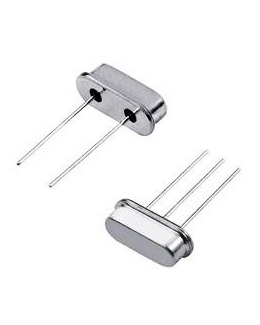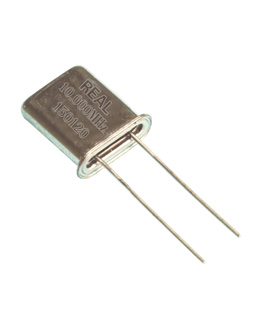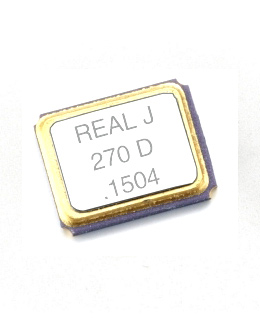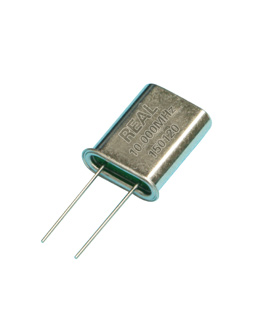Recommended Products
- HC-49S/49SS/3L Series Crystal Resonator
- Features:
. Low cost
. Industry standard package
. High reliability and stability crystal
. Wide frequency range and calibration tolerances
. Available
. Rohs compliant / Pb free
- HC-45U Series Crystal Resonator
- Features:
. Excellent aging performance
. Mass production capability
. High reliability design
. RoHS Compliant / Pb Free
. Customized as request
- 2520SMD Series Crystal Resonator
- Features:
. Seam welding
. Excellent solderability
. Automatic and perfect packing due to emboss taping
. Excellent vibration resistance & shock resistance
. Rohs compliant / Pb free
. Excellent aging performance
- HC-43U Series Crystal Resonator
- Features:
. Excellent aging performance
. Mass production capability
. High reliability design
. RoHS Compliant / Pb Free
. Customized as request
Top articles
- What is called the spurious frequency effect?
- What is the spurious frequency?
- What is the instability?
- What is the ageing rate of the quartz crystal?
- What are the AT-Cut and the BT-Cut?
- What will happen to the crystal at a temperature beyond the specified range?
- What is the main difference between the frequency tolerance and the frequency stability?
- What basic information should you provide when ordering the crystal?
Latest articles
- Realgiant Crystal Oscillator- -The Heart of Digital Circuit
- THE BIGEST DIFFERENCE OF NATRUAL SYNTHETIC
- How to quickly learn and choose quartz crystal oscillator?
- How Oscillators Work?
- What is Crystal Oscillator?
- Realgiant Application sectors: Computer motherboard
- Realgiant Cooperating Clients: ASUS
- Realgiant Cooperating Clients: GREE
- Realgiant Cooperating Clients: SAMSUNG
- Realgiant Cooperating Clients: HP
Your browsing history

What is the ageing rate of the quartz crystal?
Ageing means the change of the crystal frequency due to time passing by. Ageing will result in the deviation of the frequency in two different directions. And ageing will cause the overall drift of the frequency of the wafer installed in the oscillator.
Aging is caused by two factors, namely pollution and stress. Experiments show that the pollution on the surface of the wafer results in the negative frequency drift and the overpressure results in the positive frequency drift.
When it is placed on a support (base), the wafer may be pushed, extended or twisted by the structure where it is located. This will cause pressure on the wafer, and the pressure will be released with time passing by and result in the positive frequency drift. The correct way to arrange the wafer and the appropriate base applied are instrumental in removing or reducing the unnecessary pressure. For a finished product, the heat cycle is instrumental in releasing the pressure of placement.
The pollution on the surface of the wafer exists in all production links. The stain on the surface of the wafer causes overload and the negative frequency drift as a result. The clean working procedures and the cleaning of the surface of the wafer are instrumental in minimizing the pollution.
The crystal can have presaging to a certain degree and therefore the impact of ageing may be reduced to a minimal level. Since the ageing characteristic curve is close to the logarithmic curve, the ageing of crystal usually happens in the first few years after the birth of the crystal. Relatively speaking, the frequency change of the crystal in the first year is more frequent and quicker than it is in the second year.
Information about "FAQs "
- What is called the spurious frequency effect?
- What is the spurious frequency?
- What is the instability?
- What are the AT-Cut and the BT-Cut?
- What will happen to the crystal at a temperature beyond the specified range?
- What is the main difference between the frequency tolerance and the frequency stability?
- What basic information should you provide when ordering the crystal?









